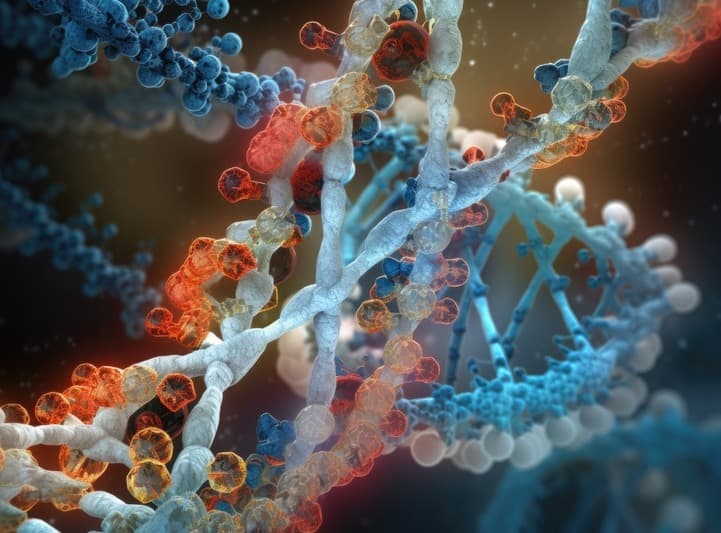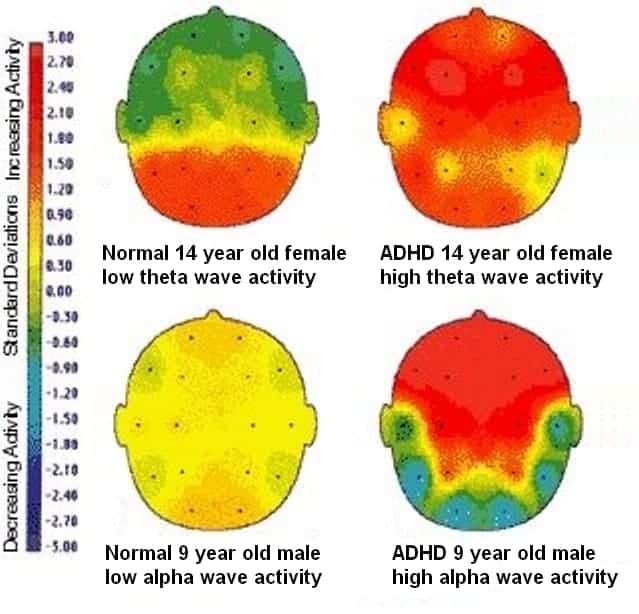Causes of ADHD. Introduction

The scientists were not able to pinpoint the root cause of ADHD. Multiple studies suggest a combination of genetic, environmental, and social factors trigger the disorder.
Genetics as the root-cause for ADHD
Inherited from our parents, genes are the “blueprints” for who we are. Results from several international twin studies show that ADHD often runs in families. Children with ADHD have thinner brain tissue in the brain areas (prefrontal cortex) associated with attention. Those children carry a version of a certain gene which seems to be the underlying cause for developing ADHD.
Environmental factors versus genetics
Scientific twin studies suggest that 9 to 20 % of hyperactive and inattentive behaviour attributes to non-shared environmental (non-genetic) factors. This means that in reverse 80 to 90 % identical twins will develop the condition. Such ratio proves that genetics is the main factor in developing ADHD.
Other studies showed that infections during pregnancy and in early childhood, and premature births increased the risk of developing ADHD.
ADHD predisposition is inherited, however not every individual with such predisposition will develop the condition. Parents can reduce the likelihood of ADHD genes being expressed as the child grows older by decreasing their child’s electronic time while increasing interpersonal time. Science-based recommendations from experts can help them take practical measures towards minimizing the risk. One of such measures is limiting the amount of television watched and computer games and putting down mobiles. Studies have shown that infants and toddlers who watch television or play with mobiles more than two hours a day are more likely to develop ADHD.
On the other hand, parents should encourage reflection and patience-promoting activities such as reading, social interactions, having family meals, reading together, playing board games, going outside and playing sports. They should engage their children in slow-paced, step-by-step activities by avoiding multitasking.
Expectant mothers should take care to avoid alcohol, cigarettes, illicit drugs, or mistreatment of themselves. A poor health care during pregnancy can increase the risk of developing ADHD. Thus, a proper medical care during delivery is particularly important.
Brain abnormalities, pathophysiology, and ADHD

The pathophysiology of ADHD is still unclear and there are several competing theories. Imaging studies using MRI and PET-scan on the brain of children with ADHD showed reduction in the volume of the prefrontal cortex.
A review of published studies involving neuroimaging, neuropsychological genetics, and neurochemistry suggest that four connected front striatal regions (the lateral prefrontal cortex, dorsal anterior cingulate cortex, caudate, and putamen) play a role in the pathophysiology causing ADHD.
Evolutionary theories and ADHD
The hunter vs. farmer theory suggests that hyperactivity may be an adaptive behaviour in pre-modern humans. The individuals with ADHD retain some of the older “hunter” characteristics associated with early pre-agricultural human society. According to this theory, individuals with ADHD may be more adept at searching and seeking. On the other hand, they are less adept at staying and managing complex tasks over time.
Hyperactivity as a leading symptom of today’s ADHD may be explained trough the adaptive evolution of ancient societies. In these societies, those with hyperactivity might have been more proficient in tasks involving risk or competition (i.e. hunting, mating rituals, etc.).
Researchers found a genetic variant associated with ADHD (DRD4 48bp VNTR 7R allele), is more frequent in more nomadic populations. Consistent with this, another group of researchers observed that the health status of nomadic men was higher if they had the ADHD associated genetic variant (7R alleles).
Social influence as the root cause of ADHD
Researchers believe that disturbed relationships between the baby and the caregiver is one of the root causes for ADHD. Emotional detachment of the caregiver has a profound effect on child’s attentional and self-regulatory abilities. Behaviour typical for ADHD has been found in children who have suffered violence and emotional abuse.
Conclusion
Preventing severe ADHD is a goal for parents. By following science-based recommendations, parents can take practical steps to reduce the risk of their child developing the condition.
While parents may not be able to prevent their child from developing ADHD, they can take comfort in the fact that ADHD need not be a liability. In the opposite, it could be rather an opportunity for the child to harness the gifts that come with ADHD, such as creativity, warmth, sharp intuitive skills, high energy, originality, and the “special something.”

DR. GREGOR KOWAL
Senior Consultant in Psychiatry,
Psychotherapy And Family Medicine
(German Board)
Call +971 4 457 4240
